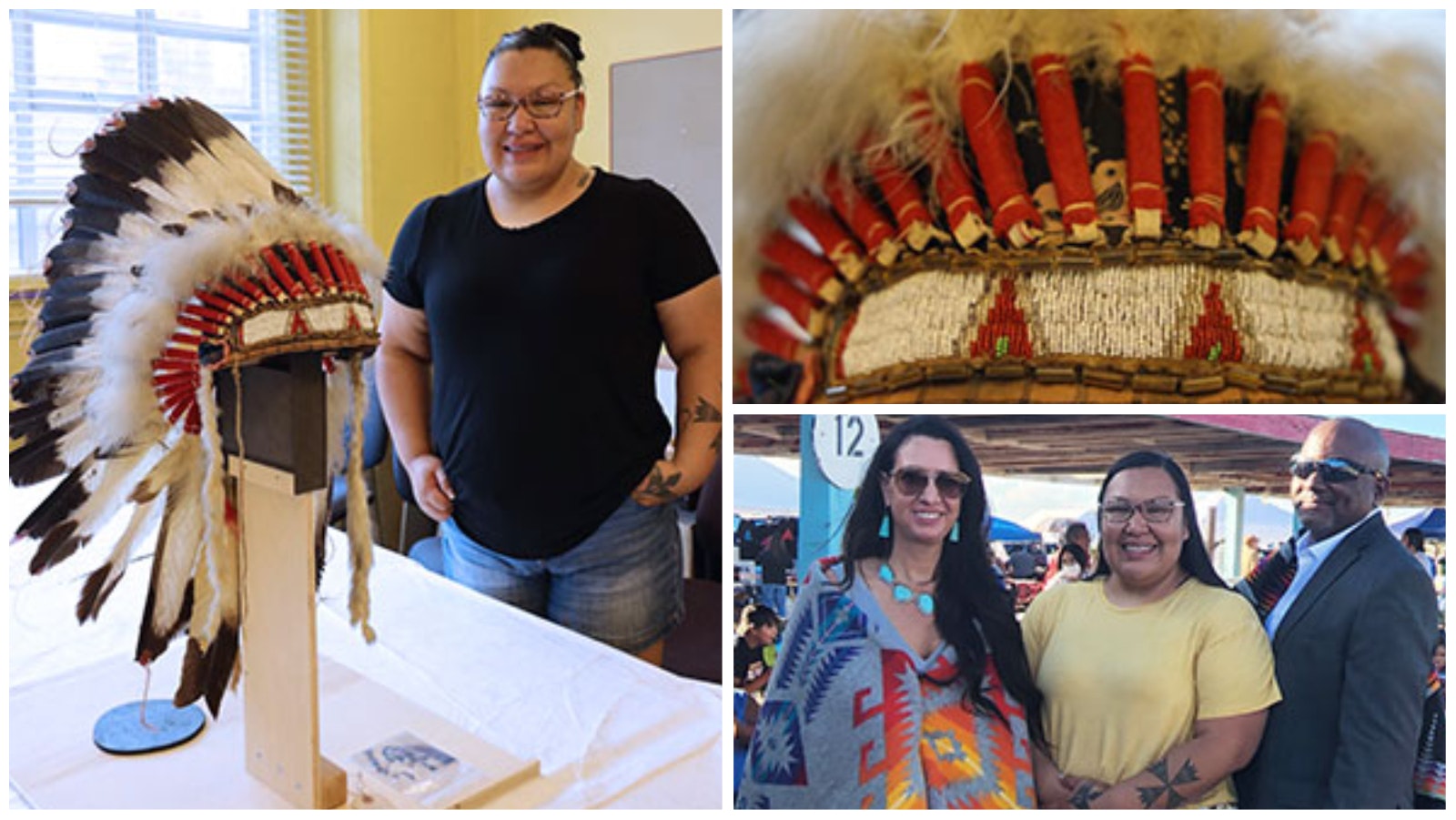Standing inside of the British Museum’s storage facility outside of London last month, Wind River Indian Reservation’s Alyson White Eagle-SoundingSides held her breath.
She was looking at her great-great grandfather’s headdress. Chief Yellow Calf’s headdress hadn’t been seen in nearly 100 years by any member of the Northern Arapaho tribe.
“My first thought was just, ‘Wow,’ because it was in perfect shape. The feathers were in great condition and the beadwork was incredible,” White Eagle-SoundingSides told Cowboy State Daily on Friday. “I was really examining it, and I noticed a long strand of black hair. Obviously, I wouldn’t put it past people to have tried it on or mishandled it. But I saw that black hair and I was awestruck.”
It was an emotional experience for White Eagle-SoundingSides that July day. She felt a mixture of joy and sorrow, because while it was a life-changing moment to reunite with Yellow Calf’s headdress, she would ultimately have to leave it behind.
At least, for a while. White Eagle-SoundingSides, along with UW art museum director Nicole Crawford and law professor Darrell Jackson, will work to bring Yellow Calf’s headdress back to Wyoming, where they said it belongs.
The headdress viewing actually came about after White Eagle-SoundingSides applied to take a summer study abroad course taught by Crawford and Jackson, “Stealing Culture: The Intersection of Criminal Law and Museums.”
Jackson and Crawford work with museums and universities around the world as they begin the work of repatriating cultural items, which were often taken without a community’s knowledge or permission.
“This was a chance for us to really personalize the course and work beyond the academic or theoretical topics,” Jackson told Cowboy State Daily on Friday.
Chief Yellow Calf, who lived from 1861 to 1938, is considered one of the Northern Arapaho tribe’s most important and respected leaders in its history.
It’s not quite clear how the chief’s immaculate headdress traveled from Ethete, Wyoming all the way to the British Museum in London. White Eagle-SoundingSides said it “depends on who you ask.”
The headdress was donated to the museum in 1939, along with a letter claiming that Yellow Calf “gifted” the piece to a man, who then gifted it to the donor.
White Eagle-SoundingSides is a little skeptical of that explanation, but noted that the Northern Arapaho people are known for being generous people.
“It would be naive of me to not consider it actually being given as a gift,” she said. “We’re known for being peaceful, generous and kind. But at the same, considering the importance of a headdress, I just find it hard to believe it was a gift.”
Tribal elders told the law student that it was likely taken from the tribe during the filming of the 1923 silent film, “The Covered Wagon.”
Either way, somehow, the headdress traveled across the world to end up in the museum. It has not been on display since 2001, so White Eagle-Sounding Sides, Crawford and Jackson had to receive special permission to view the headdress at a storage facility.
“I said a prayer for my people and a prayer for Yellow Calf,” White-Eagle-SoundingSides said. “I introduced myself in Arapaho, and I told the headdress that I came a long way to see it. I said, ‘I’m sorry you can’t go home today, but you’re going to someday.’”
As bittersweet of an experience as the headdress viewing was for White Eagle-SoundingSides, she was incredibly grateful to the museum’s curator in the Department of Africa, Oceana and the Americas, who made the experience possible.
Crawford said it will take some time to get the headdress back to Wyoming. There are really no guidelines on how a repatriation process works.
“When we were in the U.K., we really noticed museums are starting to acknowledge where their collections come from, where their money comes from for funding, things like that,” she said. “Movies like ‘Black Panther’ was a turning point for museums, for us to think about where our objects came from. I think that’s important.”
The Marvel superhero film starring the late Chadwick Boseman features a segment where a character breaks into a British museum to take back his community’s artifacts.





